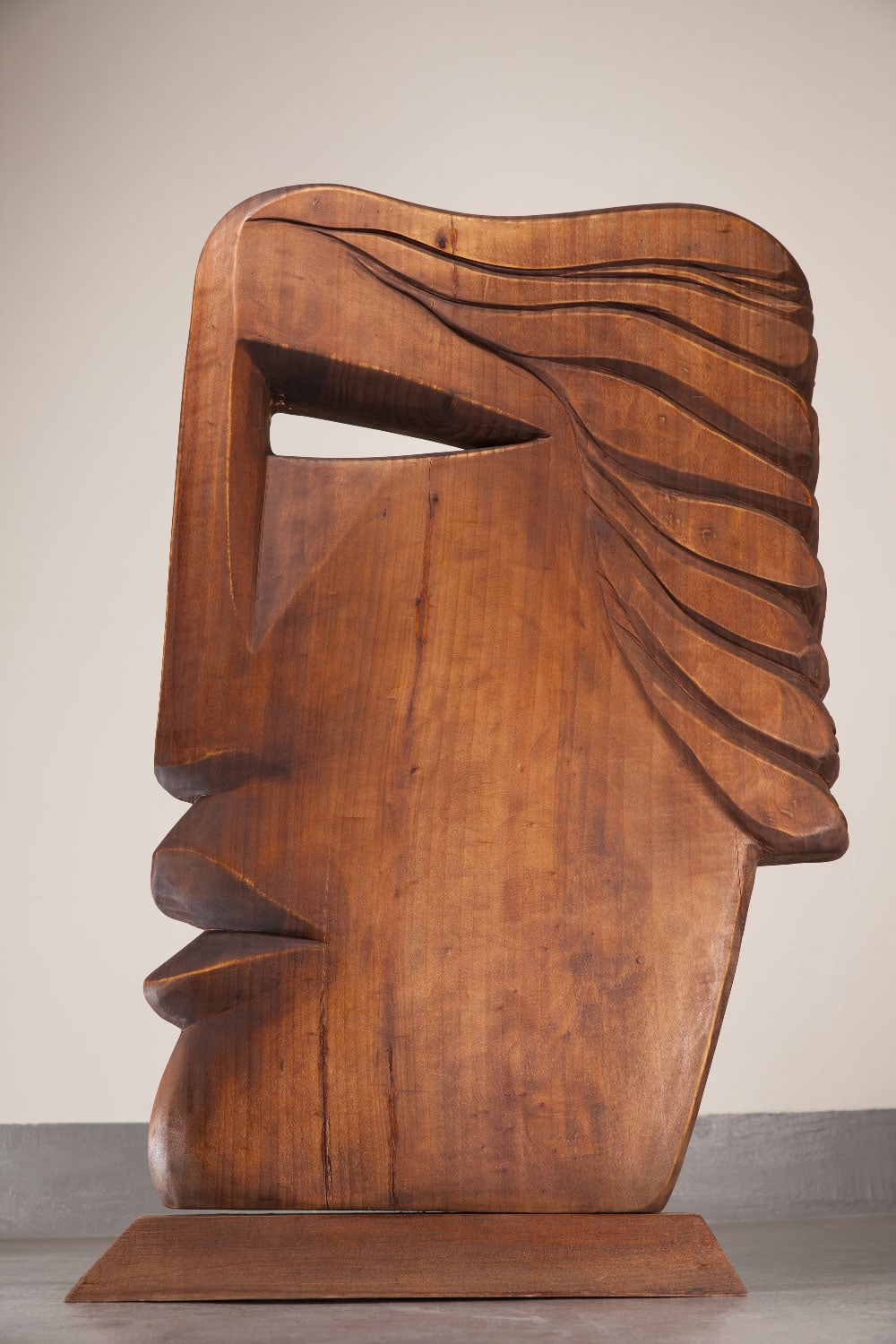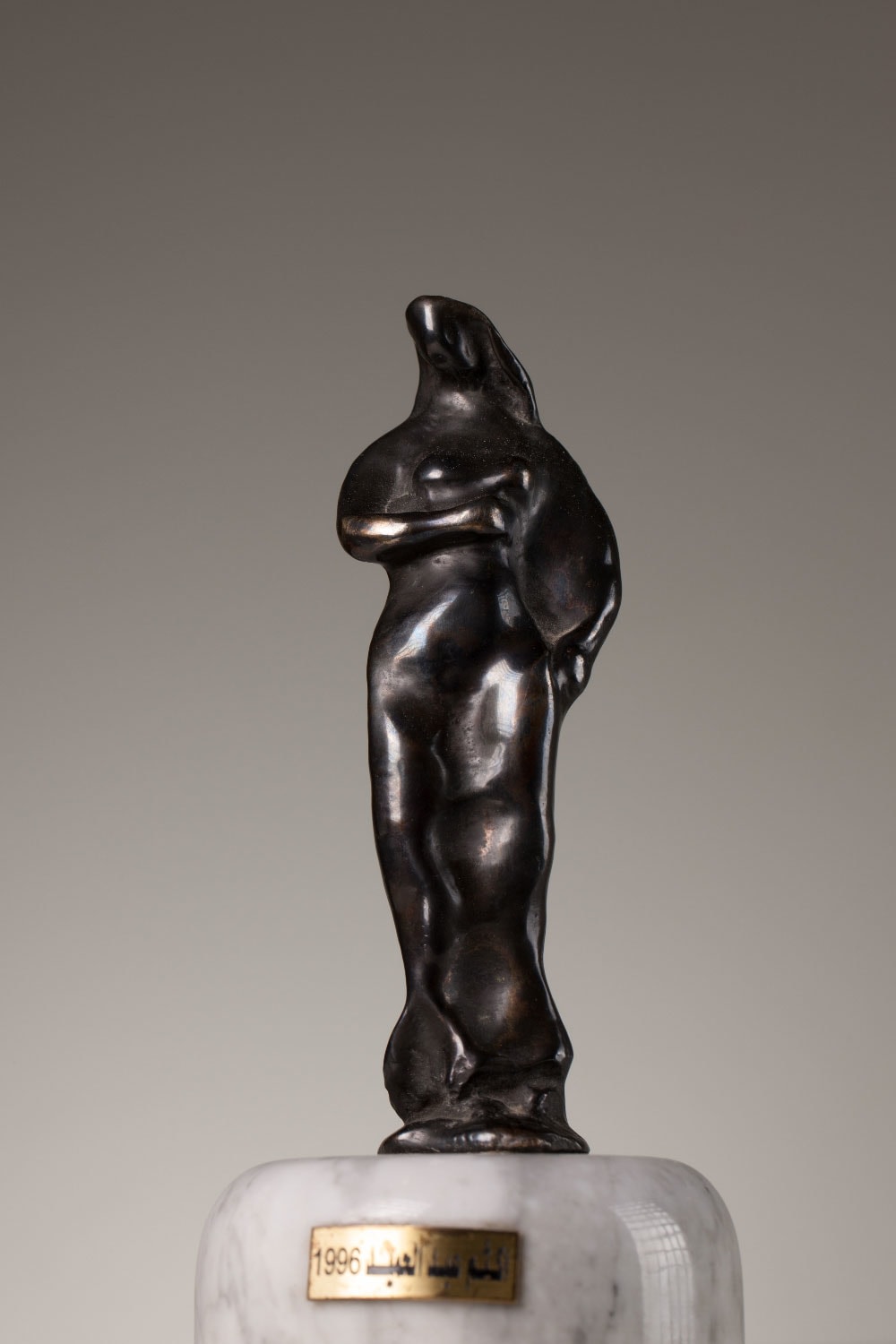Working in wood and stone sculpture, Aktham Abdulhamid’s work is influenced by regional ancient civilisations instead of the Western model of Greek and Roman sculptures that he studied at university. He explains that his work helped develop “the process of dealing with heritage topics and mythological symbols in a way that serves modern art” in Syria.
Born in Jabla, Aktham Abdulhamid (1955) graduated from the Department of Sculpture, Faculty of Fine Arts, Damascus University in 1981. He taught at – and was later appointed the head of – the Institute of Applied Arts in Damascus. Afterwards, Abdulhamid moved to Spain, where he became the Director of the Syrian Cultural Centre in Madrid.
Stemming from a long artistic study of Syrian mythology and traditional art, Abdulhamid forms his sculptures using modernist techniques. Minimalist and abstracted, his work condenses the human body into rich visual symbols that have ancient references. The female figure, he says, is seen prominently in his work because “throughout history [the woman] had an important role in knowledge and religion, as her body is linked to astronomy, birth, death, motherhood and other beautiful artistic vocabulary.”
Abdulhamid has participated in exhibitions and symposiums in Syria, Jordan, Cyprus, Spain, France, Germany, the UAE, Egypt, Bahrain and Hungary. His works were acquired by the Syrian Ministry of Culture, the National Museum in Damascus, and within private collections internationally.


